Embark on a journey through lush and lovely landscapes with our guide to trees that start with ‘L’. Explore the beauty and diversity of these enchanting species, perfect for nature enthusiasts and curious minds alike.
Trees are amazing. They give us clean air, shade and beauty. Some trees have names that start with the letter ‘L’. Let’s learn about these special trees.
1. Lemon Tree
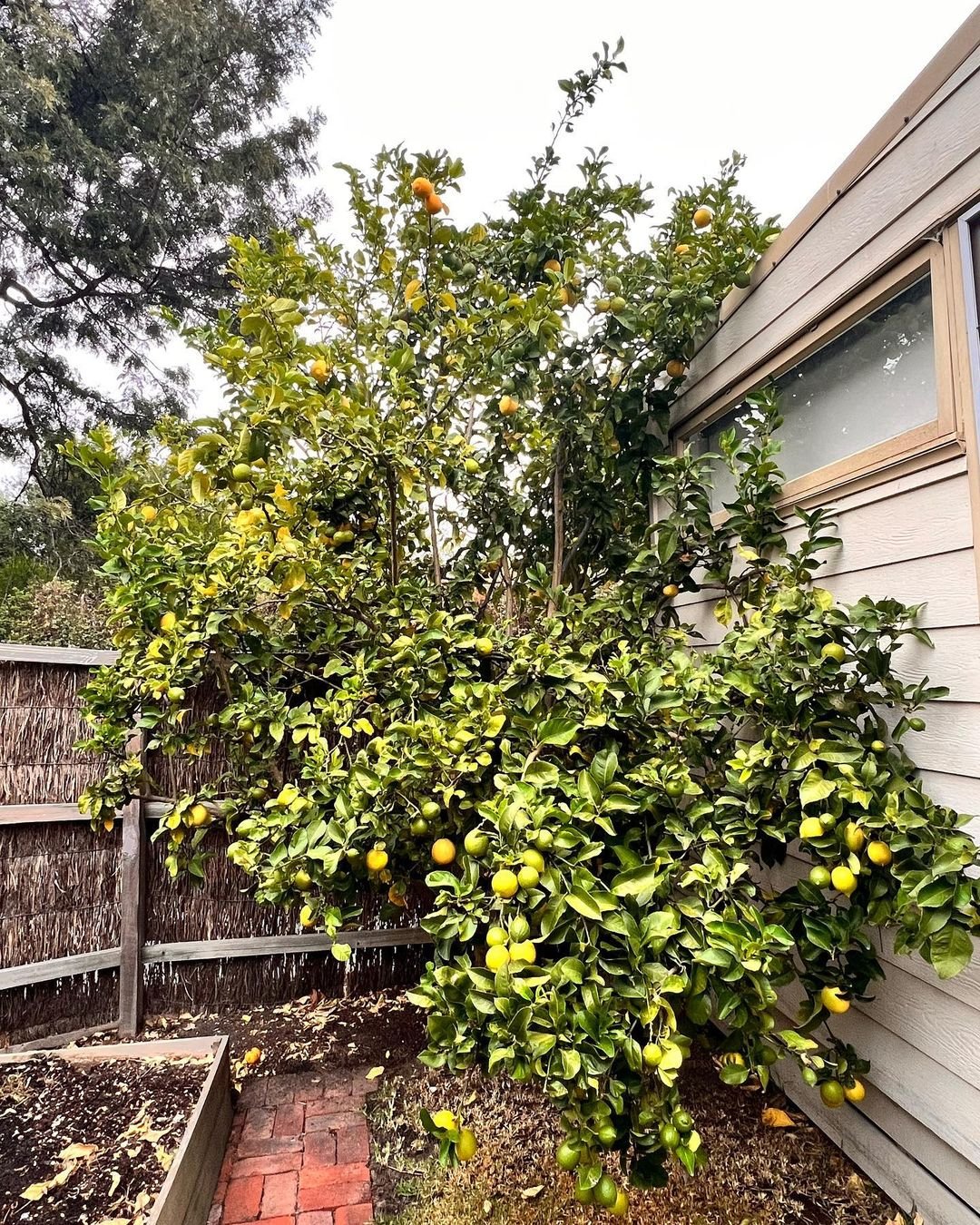
Here’s a detailed and verified chart for the Lemon Tree (Citrus limon):
| Category | Details |
|---|---|
| Botanical Name | Citrus limon |
| Common Name | Lemon Tree |
| Plant Name | Lemon Tree |
| Zone | Typically zones 9-11 |
| Sun Exposure | Full sun |
| Soil Type | Well-draining, fertile soil |
| Watering | Regular; prefers consistently moist soil |
| Growth Habit | Evergreen tree |
| Height/Spread | 10-20 feet tall, 10-15 feet wide |
| Special Features | Fragrant white flowers; tart yellow fruits (lemons); popular for culinary use and as ornamental trees; sensitive to frost; suitable for containers and gardens; requires warm temperatures and protection from cold winds |
The lemon tree is a favorite. It gives us tasty yellow fruits. Lemon trees like warm weather. They grow best in places like Florida and California. Lemon trees have dark green leaves and white flowers that smell nice. The fruit is sour but full of vitamin C. Many people use lemons in drinks and cooking.
Lemon trees can grow in your yard or in a pot. They need lots of sun and water. If you take good care of a lemon tree, it can give you fruit for many years. Lemon trees are not just for fruit. They also look pretty in gardens.
2. Live Oak
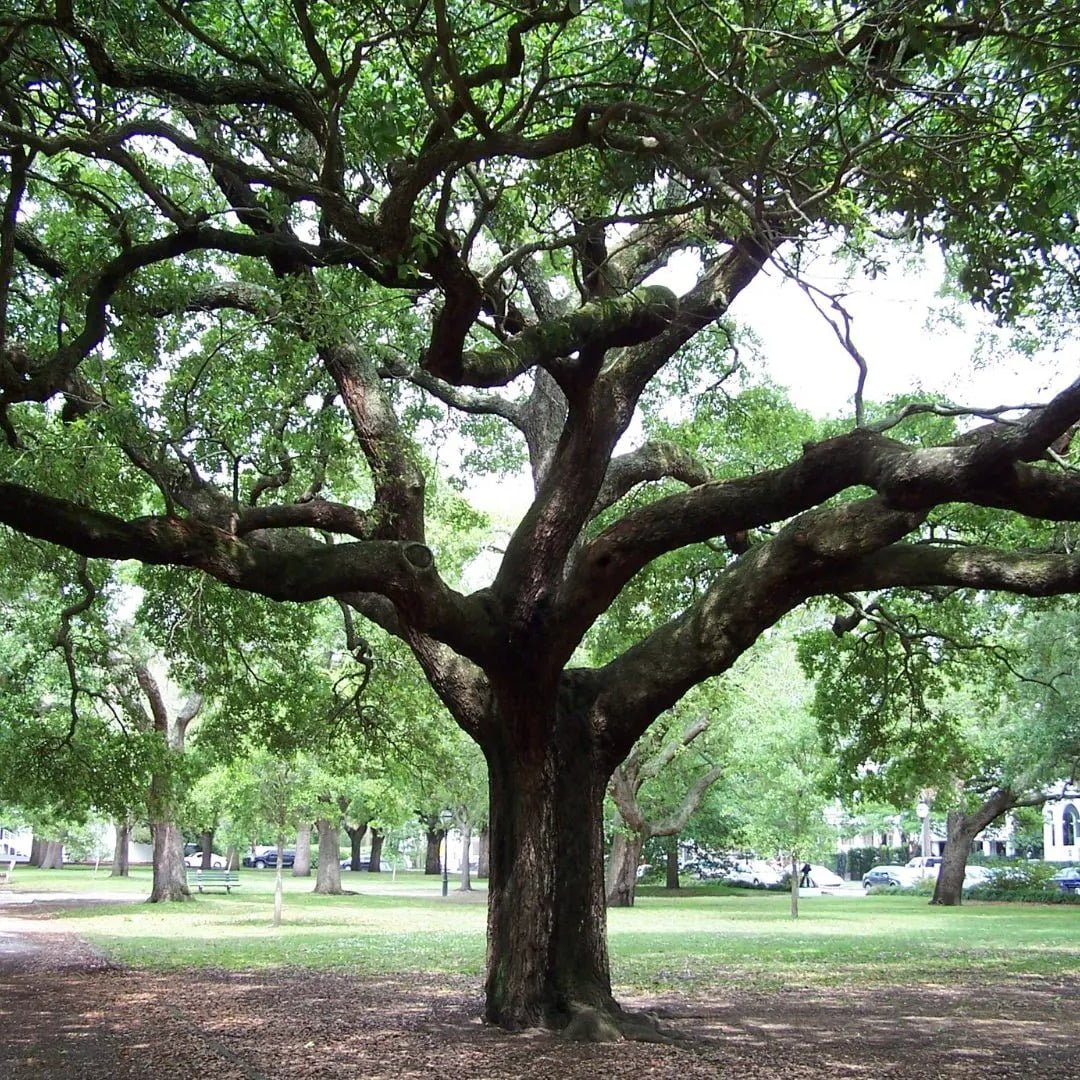
Here’s a detailed and verified chart for the Live Oak (Quercus virginiana):
| Category | Details |
|---|---|
| Botanical Name | Quercus virginiana |
| Common Name | Live Oak |
| Plant Name | Live Oak tree |
| Zone | Typically zones 7-10 |
| Sun Exposure | Full sun to partial shade |
| Soil Type | Well-draining, adaptable to various soil types |
| Watering | Moderate; drought-tolerant once established |
| Growth Habit | Evergreen or semi-evergreen tree |
| Height/Spread | 40-80 feet tall, 60-100 feet wide |
| Special Features | Dense, spreading canopy; dark green leaves; provides significant shade; tolerant of coastal conditions and urban environments; supports diverse wildlife; iconic in Southern landscapes and cultural symbolism |
Live oaks are big, strong trees. They grow in the southern United States. These trees stay green all year. That’s why they’re called “live” oaks. Live oaks can live for hundreds of years. They have thick trunks and wide branches.
Many animals like live oaks. Birds build nests in them. Squirrels eat their acorns and find shelter in their branches. Live oaks are also important in history. Their wood was used to build ships long ago. Today, people plant live oaks in parks and along streets for shade.
3. Linden Tree

Here’s a detailed and verified chart for the Linden Tree (Tilia spp.):
| Category | Details |
|---|---|
| Botanical Name | Tilia spp. |
| Common Name | Linden Tree |
| Plant Name | Linden Tree |
| Zone | Varies by species; typically zones 3-8 |
| Sun Exposure | Full sun to part shade |
| Soil Type | Well-draining, loamy soil |
| Watering | Regular; prefers moist soil |
| Growth Habit | Deciduous tree |
| Height/Spread | Varies by species; typically 40-80 feet tall, 30-50 feet wide |
| Special Features | Fragrant yellowish-white flowers in early summer; heart-shaped leaves; attractive to bees for honey production; tolerant of urban conditions; used in landscaping and as a shade tree; some species have medicinal and culinary uses |
Linden trees are lovely. They have heart-shaped leaves and small, sweet-smelling flowers. Bees love these flowers. Linden honey is very tasty. These trees grow in many parts of the world. In Europe, people have used linden trees for medicine for a long time.
Linden trees are good for cities. They can handle pollution well. Their leaves give nice shade in summer. In fall, the leaves turn yellow. Linden wood is soft and easy to carve. Many artists use it to make things.
4. Laurel Tree
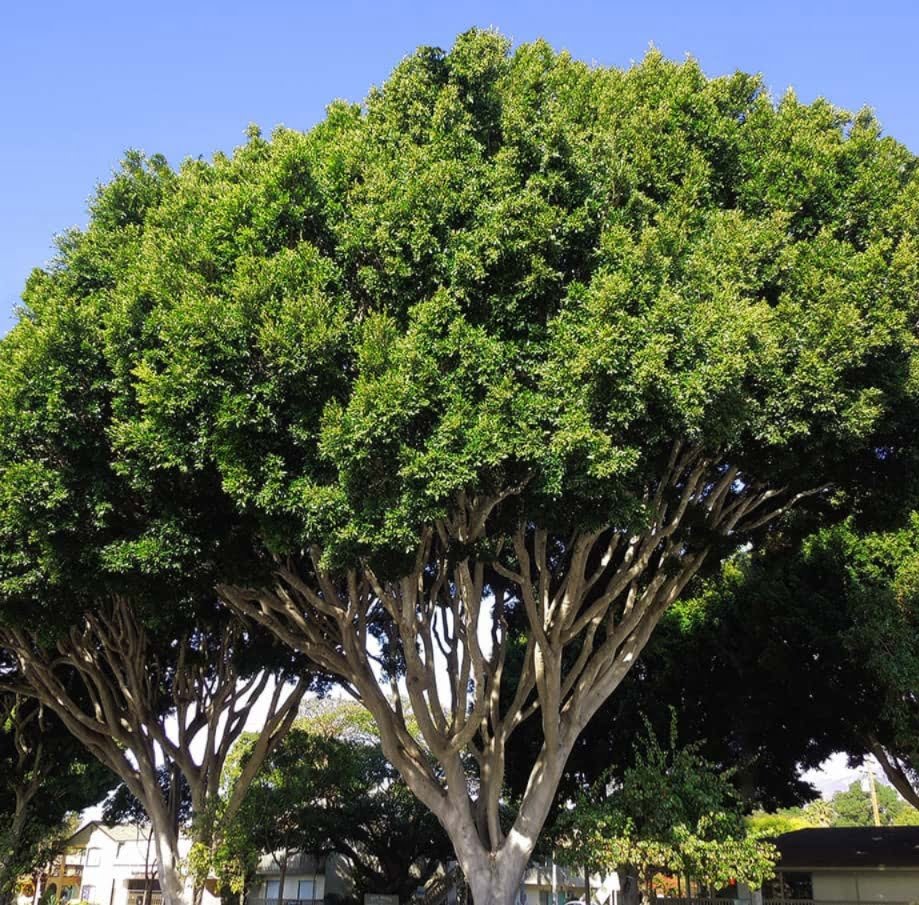
Here’s a detailed and verified chart for the Laurel Tree (Laurus nobilis):
| Category | Details |
|---|---|
| Botanical Name | Laurus nobilis |
| Common Name | Laurel Tree |
| Plant Name | Bay Laurel |
| Zone | Typically zones 8-11 |
| Sun Exposure | Full sun to partial shade |
| Soil Type | Well-draining, fertile soil |
| Watering | Regular; prefers consistently moist soil |
| Growth Habit | Evergreen tree or large shrub |
| Height/Spread | Up to 30-40 feet tall, 10-20 feet wide |
| Special Features | Aromatic leaves used in culinary dishes; small yellow flowers in spring; tolerant of coastal conditions; adaptable to pruning and shaping; deer resistant; historically significant in Greek and Roman cultures |
Laurel trees are special. In ancient times, people used laurel leaves to make crowns for winners. That’s why we say “don’t rest on your laurels” today. Laurel trees have shiny green leaves that smell good when crushed. Some types of laurel trees give us bay leaves for cooking.
Laurel trees can grow big or stay small. People often use them in gardens. They can be shaped into different forms. Laurel trees are tough and can live in many places. They like sun but can grow in shade too.
5. Liquidambar Tree

Here’s a detailed and verified chart for the Liquidambar Tree (Liquidambar styraciflua):
| Category | Details |
|---|---|
| Botanical Name | Liquidambar styraciflua |
| Common Name | Sweetgum, Liquidambar |
| Plant Name | Liquidambar tree |
| Zone | Typically zones 5-9 |
| Sun Exposure | Full sun to partial shade |
| Soil Type | Moist, well-draining soil |
| Watering | Regular; drought-tolerant once established |
| Growth Habit | Deciduous tree |
| Height/Spread | 60-80 feet tall, 40-50 feet wide |
| Special Features | Star-shaped leaves that turn vibrant colors in fall; spiky fruit balls; tolerant of various soil types and urban conditions; provides shade and ornamental value; important timber tree; attracts wildlife |
Liquidambar trees are also called sweet gum trees. They have star-shaped leaves that turn pretty colors in fall. The tree gets its name from the sweet-smelling sap it makes. This sap was used as medicine and to make gum long ago.
Liquidambar trees grow tall and straight. They have spiky seed balls that hang on the tree. These seed balls can be a problem in yards, but birds like to eat the seeds. Liquidambar wood is used to make furniture and floors.
6. Locust Tree
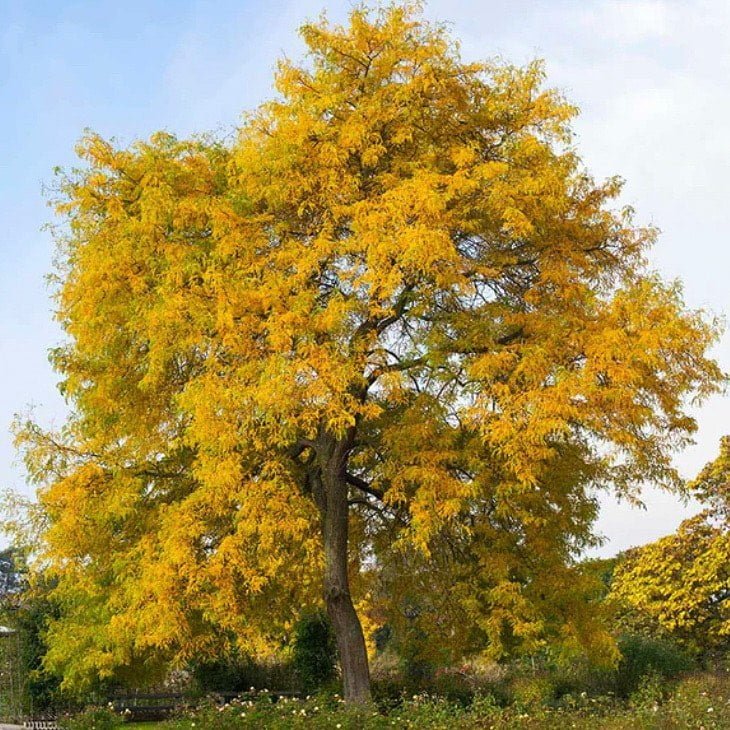
Here’s a detailed and verified chart for the Locust Tree (Robinia pseudoacacia):
| Category | Details |
|---|---|
| Botanical Name | Robinia pseudoacacia |
| Common Name | Black Locust |
| Plant Name | Locust Tree |
| Zone | Typically zones 4-8 |
| Sun Exposure | Full sun |
| Soil Type | Well-draining, prefers sandy or loamy soil |
| Watering | Moderate; drought-tolerant once established |
| Growth Habit | Deciduous tree |
| Height/Spread | 30-50 feet tall, 20-35 feet wide |
| Special Features | Fragrant white flowers in spring; pinnately compound leaves; thorny branches; nitrogen-fixing properties benefit surrounding plants; tolerant of poor soil and urban conditions; valuable wood for woodworking |
Locust trees are tough. They can grow in poor soil and dry places. There are two main types black locust and honey locust. Both have small leaves and long seed pods. Locust trees grow fast and have strong wood.
Black locust trees have white flowers that smell nice. Bees like these flowers a lot. Honey locust trees have long thorns and sweet seed pods. Both types of locust trees are good for the earth. They can help make poor soil better by fixing nitrogen.
7. Lilac Tree

Here’s a detailed and verified chart for the Lilac Tree (Syringa vulgaris):
| Category | Details |
|---|---|
| Botanical Name | Syringa vulgaris |
| Common Name | Lilac Tree |
| Plant Name | Lilac |
| Zone | Typically zones 3-7 |
| Sun Exposure | Full sun to part shade |
| Soil Type | Well-draining, fertile soil |
| Watering | Regular; prefers evenly moist soil |
| Growth Habit | Deciduous shrub or small tree |
| Height/Spread | 8-15 feet tall, 6-12 feet wide |
| Special Features | Fragrant clusters of purple, pink, or white flowers in spring; heart-shaped leaves; attracts butterflies and bees; deer resistant; used as ornamental and cut flowers; tolerates pruning and shaping; some varieties have variegated foliage |
Lilac trees are loved for their pretty, sweet-smelling flowers. Most lilacs are bushes, but some grow as small trees. Lilac flowers can be purple, pink or white. They bloom in spring and make gardens smell wonderful.
Lilac trees are easy to grow. They like sun and can live for many years. After the flowers are gone, lilacs have green leaves all summer. Many people plant lilacs near their homes to enjoy the flowers and smell.
8. Larch Tree
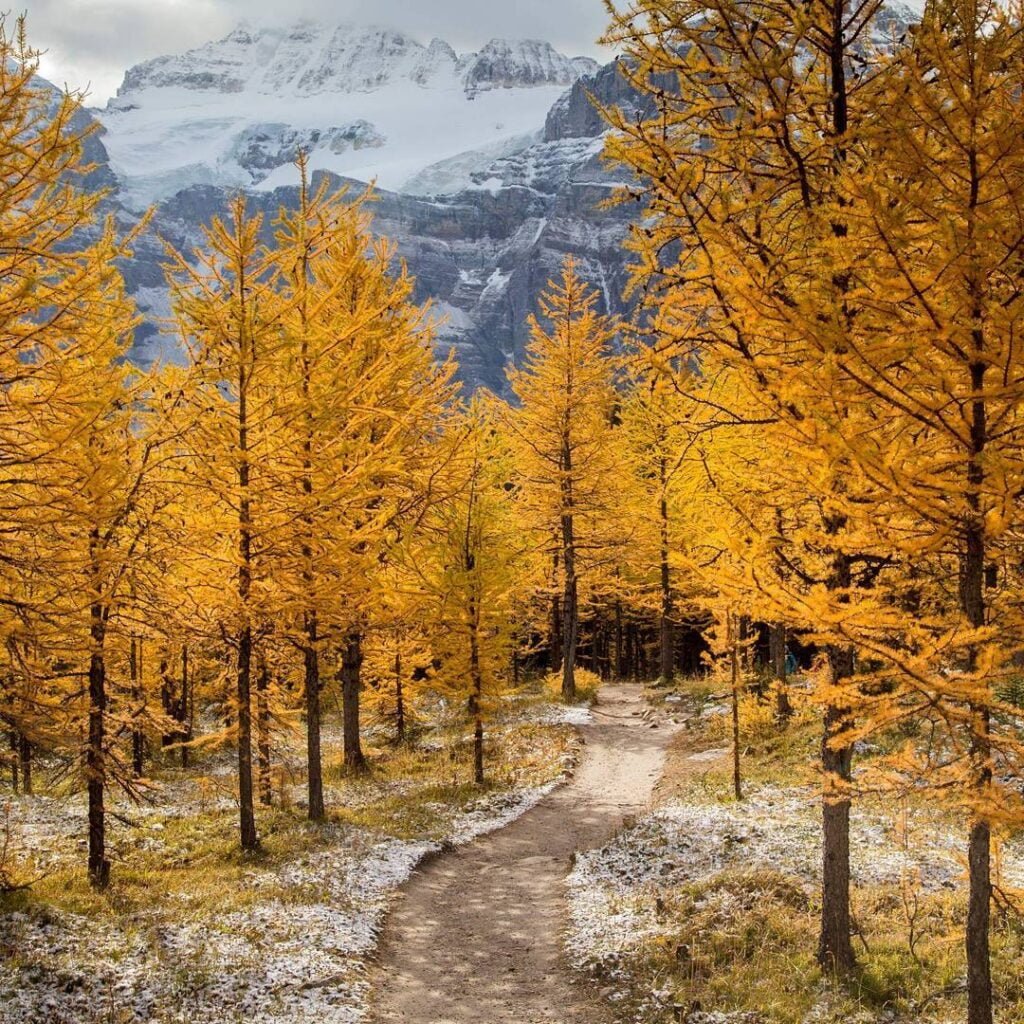
Here’s a detailed and verified chart for the Larch Tree (Larix spp.):
| Category | Details |
|---|---|
| Botanical Name | Larix spp. |
| Common Name | Larch Tree |
| Plant Name | Larch |
| Zone | Varies by species; typically zones 2-7 |
| Sun Exposure | Full sun to part shade |
| Soil Type | Well-draining, moist soil |
| Watering | Regular; prefers consistently moist soil |
| Growth Habit | Deciduous coniferous tree |
| Height/Spread | Varies by species; typically 50-80 feet tall |
| Special Features | Soft, needle-like leaves that turn yellow in fall; cones are small and upright; adaptable to cold climates; important timber tree; provides wildlife habitat; resistant to pests and diseases |
Larch trees are special. They are one of the few trees that lose their needles in winter. Most trees with needles stay green all year. Larch trees have soft, green needles in spring and summer. In fall, the needles turn yellow and fall off.
Larch trees grow tall and straight. They like cold places and can grow high in mountains. Larch wood is strong and used to build things. These trees are also pretty. People plant them in parks and gardens for their unique look.
9. Loquat Tree
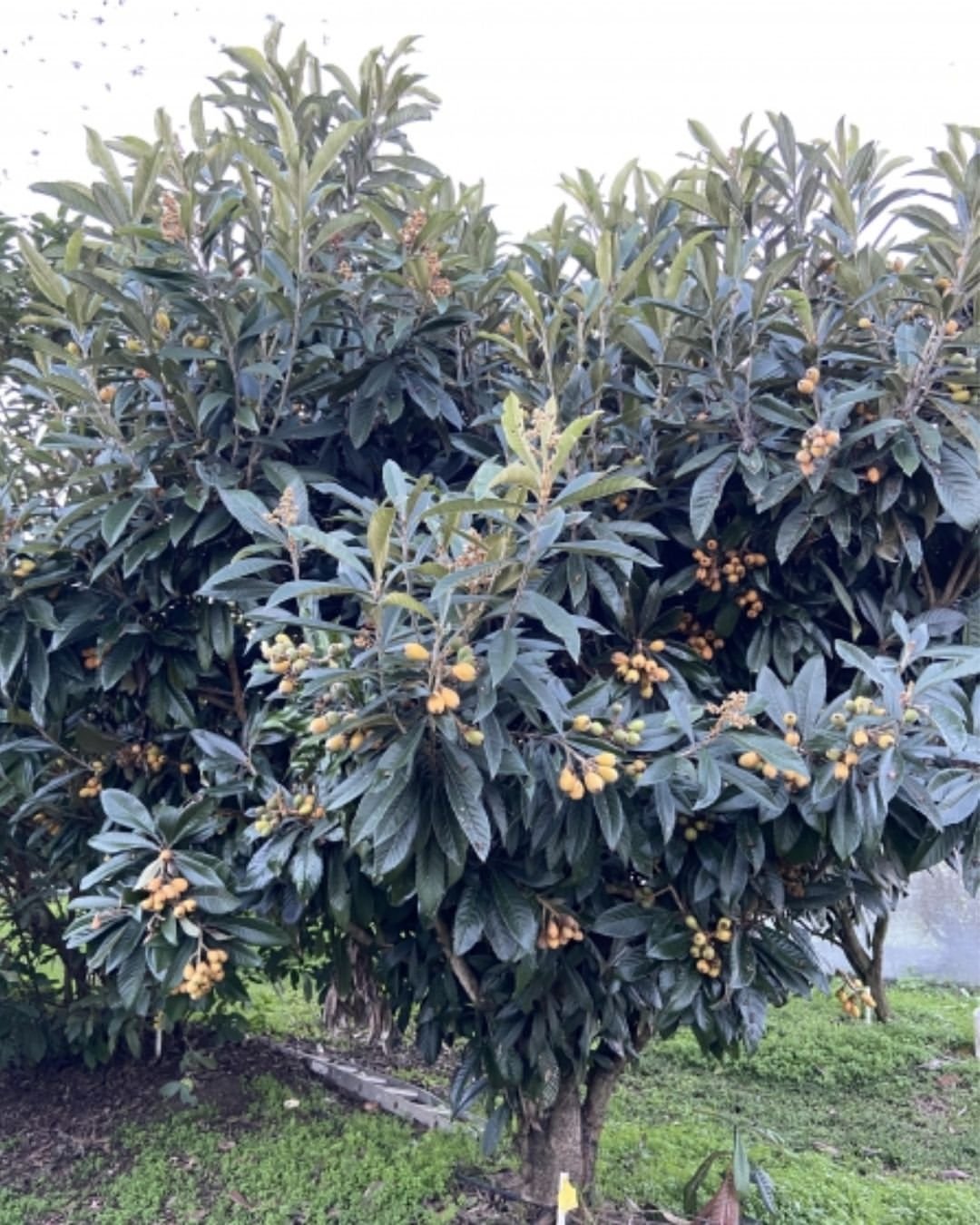
Here’s a detailed and verified chart for the Loquat Tree (Eriobotrya japonica):
| Category | Details |
|---|---|
| Botanical Name | Eriobotrya japonica |
| Common Name | Loquat Tree |
| Plant Name | Loquat |
| Zone | Typically zones 8-10 |
| Sun Exposure | Full sun to partial shade |
| Soil Type | Well-draining, fertile soil |
| Watering | Regular; prefers evenly moist soil |
| Growth Habit | Evergreen tree |
| Height/Spread | 10-25 feet tall, 10-15 feet wide |
| Special Features | Clusters of fragrant white flowers in fall; edible, pear-shaped yellow or orange fruits; glossy, dark green leaves; tolerant of coastal conditions; drought tolerant once established; used in landscapes for its ornamental and fruit-bearing qualities |
Loquat trees give us sweet fruit. They grow in warm places. Loquat trees have big, dark green leaves. The fruit is small and yellow or orange. It tastes a bit like peaches and plums mixed together.
Loquat trees are pretty and useful. They give shade and fruit. The leaves stay green all year. In some places, people make tea from loquat leaves. Birds and other animals like to eat loquat fruit too.
10. London Plane Tree

Here’s a detailed and verified chart for the London Plane Tree (Platanus × acerifolia):
| Category | Details |
|---|---|
| Botanical Name | Platanus × acerifolia |
| Common Name | London Plane Tree |
| Plant Name | London Plane |
| Zone | Typically zones 5-9 |
| Sun Exposure | Full sun to part shade |
| Soil Type | Tolerant of various soil types; prefers well-draining |
| Watering | Regular; drought-tolerant once established |
| Growth Habit | Deciduous tree |
| Height/Spread | 50-80 feet tall, 50-70 feet wide |
| Special Features | Large, maple-like leaves; exfoliating bark reveals mottled pattern; tolerates urban conditions and pollution; provides ample shade; hybrid of American sycamore and Oriental plane trees; popular as street and park trees |
London plane trees are tough city trees. They can handle pollution and small spaces. These trees are a mix of two other trees: American sycamore and Oriental plane. London plane trees have big leaves and bark that peels off in patches.
Many cities plant London plane trees along streets. They grow tall and give good shade. The trees can live for a long time, even in busy places. Their seeds hang in balls on the tree all winter.
Trees that start with ‘L’ are diverse and interesting. From the sweet lemon to the tough locust, each tree is special. These trees give us food, wood, shade and beauty. Learning about trees helps us understand nature better.
Next time you’re outside, look for these ‘L’ trees. You might find a linden’s heart-shaped leaves or smell a lilac’s sweet flowers. Trees make our world better in many ways. By knowing more about them, we can take better care of our planet.
Remember, trees are living things. They need care and respect. Plant a tree if you can. If not, enjoy and protect the trees around you. Every tree, big or small, helps make our world greener and healthier.
Would you like to know more about any of these trees? Or should we explore trees that start with another letter? Nature has so much to teach us and there’s always more to